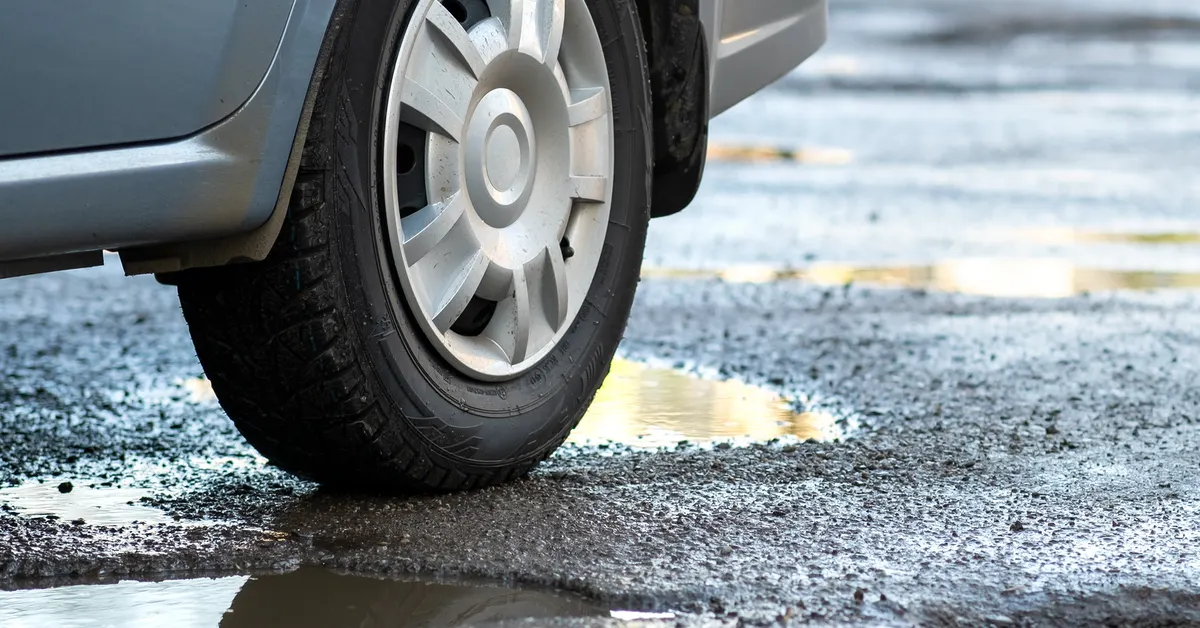
You don’t need to read the news to know that Britain has a pothole problem. We’re estimated to have over a million potholes on the country’s roads – so chances are you’ve bumped over at least one or two of them recently. With RAC data showing drivers pay on average £460 for anything more serious than a pothole-puncture you might even have thought to yourself: blimey, hope that doesn’t scrap my car.
In the final quarter of 2024 alone, the RAC responded to 4,709 pothole-related breakdowns, a 17% increase from the previous quarter. It’s a major issue for UK highways, and a growing one too. Thankfully, the government isn’t ignorant to the situation, and it’s allocated record-breaking funding to local councils this year to help them start making serious inroads into dealing with the problem. The question is: will it be enough?
Why are potholes such a big problem in the UK?
There’s a reason that the issue we’re dealing with is being widely described as a “pothole epidemic” – it’s estimated that there are more than a million potholes scattered across the UK’s road network. Data from only 81 of 185 English councils reported over 556,000 potholes in a single year. Factoring in the missing councils and the other UK nations, it’s easy to see how the real number is likely to be two or three times higher.
Potholes are more than just annoying – they’re destructive. Potholes are responsible for a wide range of vehicle damage, from punctured tyres to broken suspension springs, distorted wheels and damaged shock absorbers. To put that into perspective, punctures alone accounted for 39% of breakdowns attended by RAC patrols in the last quarter of 2024, the highest percentage recorded that year.
As you can imagine, that results in an eye-watering cost to drivers. Garage repair bills for pothole-related damage average around £460, far exceeding the £260 compensation typically paid out by councils. To add insult to injury, the average cost of fixing a pothole is £72.
So then, why so many? The UK’s wet, cold climate is a major factor. Water gets into small cracks, freezes and expands, tearing up the road surface. Combine that with heavy traffic, ageing infrastructure and delayed maintenance, and you’ve got a perfect storm for pothole formation.
Interestingly, 2024’s spike in breakdowns came despite a relatively mild winter. There were fewer frost days and almost 30% less rainfall in the final quarter of 2024, but pothole-related damage still went up – perhaps suggesting that underlying road conditions are already so poor that even modest weather extremes push them over the edge.
There’s encouraging signs of progress
The pothole crisis didn’t escape political notice during the 2024 general election. In fact, Labour made it one of the cornerstones of its campaign, pledging to fix a million potholes a year in England.
And so far, there are signs that ministers are making a decent effort to make good on that promise. The government has allocated £1.6 billion for pothole repairs in England through to 2026. It’s the largest one-off road maintenance fund ever given to local councils, and includes a £500 million uplift on previous figures. Councils will start getting access to this from mid-April.
However, there are conditions. Crucially, the government has said that English councils are required to publish annual reports detailing their progress, or face losing a quarter of the full allocation. So while all eligible local authorities will get 75% of funding from a standing start, the Department for Transport will hold back the remaining 25% until councils demonstrate that they’re actually delivering results. Funding that is held back will be redistributed to councils that have proven to have made the required progress.
The funding also comes with guidance that encourages preventative work rather than reactive patching. That means more surface dressing, more structural repairs, and ideally fewer potholes forming in the first place. The government estimates this funding package could enable the repair of an additional seven million potholes across England.
Notably, all this marks a move away from the short-termism that’s plagued road maintenance funding for years. Rapid cash injections have been followed by long periods of underinvestment, which have left councils struggling to keep up. Now, industry bodies like the RAC and Asphalt Industry Alliance (AIA) are calling for long-term financial strategies – a call that’s finally being echoed in government circles. There’s growing agreement that planned resurfacing and proper investment in road structure is more effective – and more economical – than endless reactive patching.
…But there’s still some way to go
Despite the upbeat headlines, the figures suggest there’s still a massive mountain to climb. In 2023/24, only 1.5% of local roads were resurfaced. On average, roads in England are resurfaced once every 93 years – a shocking figure given that 52% of local roads have less than 15 years of structural life remaining. Worryingly, 34,600 miles of roads may only last another five years without intervention.
Estimates now put the cost of clearing the UK’s pothole repair backlog at £17 billion. If that’s accurate, the £1.6 billion currently allocated barely scratches the surface. Local authorities say they would need an extra £7.4 million each per year to keep their roads in proper condition.
Then there’s the survey from the Annual Local Authority Road Maintenance, or ALARM. This revealed that - despite over £20 billion being spent on road maintenance over the last decade - 94% of councils saw no improvement in their road networks last year. This is often attributed to the fractured structure of funding: short-term fixes that don’t allow for long-term planning.
The Local Government Association and the AIA have both stressed that without predictable, long-term investment, the deterioration of Britain’s roads will continue. Local authorities are also feeling the pinch from inflation, rising demand on statutory services, and workforce pressures. Even though the incentivised model of funding is designed to ensure accountability, holding back a quarter of the money has raised concerns among councils. Without financial certainty, they say, it may well be impossible to plan strategically for road maintenance at scale.
Whatever happens, you can always count on us here at EMR Vehicle Recycling to keep doing what we do best – and that’s giving you the very best price when you finally decide that you need to scrap your car. We have more than 70 years of experience to our name, and Authorised Treatment Facilities all over the UK, so wherever you’re based, we’re never far away and can provide gold-standard service.
It couldn’t be easier to get started. All you need to do is enter your car reg and postcode into the fields on our homepage, and you’ll have an instant online quote before you can say scrap my car. Wondering how much your car could be worth?

